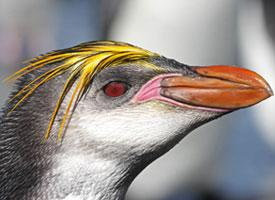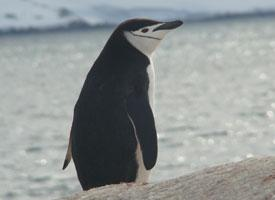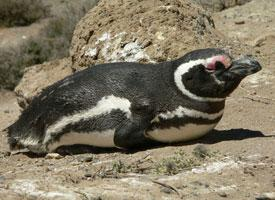
Súlyok és méretek
| Marmagasság | 70 cm |
|---|---|
| Súly | 6 kg |
Veszélyeztetettség
| Veszélyeztetett |
Állatleírás
The Royal Penguin (Eudyptes schlegeli) is a charismatic and visually striking species of crested penguin known for its distinctive appearance and behavior. This medium-sized penguin typically stands at about 65 to 75 centimeters (25 to 30 inches) in height and weighs around 4 to 6 kilograms (8.8 to 13.2 pounds), with males generally being larger than females.Royal Penguins are easily distinguished by their striking coloration and physical features. They have a white or pale grey face, which contrasts sharply with their slate-grey to black upperparts. The most distinguishing characteristic of the Royal Penguin is the vivid yellow-orange plumage that extends from above their eyes to the back of their heads, forming a regal-looking crest, which is a common trait among Eudyptes penguins. Their eyes are red or brown, and their beaks are robust and orange with a darker tip.
The underparts of the Royal Penguin are predominantly white, providing excellent camouflage against predators from below while swimming. Their flippers are short and stiff, adapted for a life spent mostly in the water. On land, they can be rather awkward, often seen waddling on their feet or sliding on their bellies across the ice and snow.
Royal Penguins are endemic to the sub-Antarctic regions, with the bulk of the population found on Macquarie Island, which lies between New Zealand and Antarctica. This island provides the ideal habitat with its rocky shores and beaches, where they breed and molt. They are a highly social species, forming large colonies that can number in the tens of thousands during the breeding season.
The breeding season begins in September or October, when the penguins return to the island after spending the winter foraging at sea. They engage in elaborate courtship displays, which include loud calls, head swinging, and flipper waving to attract mates. Once paired, the female lays two eggs, but typically only one chick is raised to fledging. Both parents share the responsibilities of incubating the eggs and feeding the chick through regurgitation.
Outside the breeding season, Royal Penguins spend a significant amount of time at sea, where they are formidable swimmers. They dive to depths of over 100 meters (328 feet) in search of food, primarily consisting of krill, fish, and squid. Their streamlined bodies and powerful flippers enable them to reach speeds of up to 20 kilometers per hour (12.4 miles per hour) while pursuing prey.
Despite their isolated habitat, Royal Penguins face several threats. Historically, they were hunted for their oil, and while this is no longer a practice, they are still at risk from introduced predators, such as rats and cats, on their breeding islands. Climate change also poses a significant threat, potentially impacting their food sources and breeding habitat.
Conservation efforts for Royal Penguins include the eradication of introduced predators from their breeding grounds and ongoing monitoring of their population numbers. As a species confined to a relatively small geographic area, they are particularly vulnerable to changes in their environment, making conservation measures critical for their continued survival.
The Royal Penguin is a fascinating example of the unique wildlife that inhabits Earth's remote and harsh environments. Their resilience and adaptations to the sub-Antarctic climate make them a subject of interest for biologists and wildlife enthusiasts alike. With their regal bearing and social nature, Royal Penguins continue to captivate those who are fortunate enough to witness them in their natural habitat.
Hasonló állatok
Új állatfotók
Top 10 állat
- Dolphin gull (Leucophaeus scoresbii)
- Japanese macaque (Macaca fuscata)
- Stone loach (Barbatula barbatula)
- Russian tortoise (Testudo horsfieldii)
- Galápagos tortoise (Geochelone nigra complex)
- Greek tortoise (Testudo graeca)
- Diana monkey (Cercopithecus diana)
- Common flying dragon (Draco volans)
- Moustached guenon (Cercopithecus cephus)
- Galápagos penguin (Spheniscus mendiculus)


